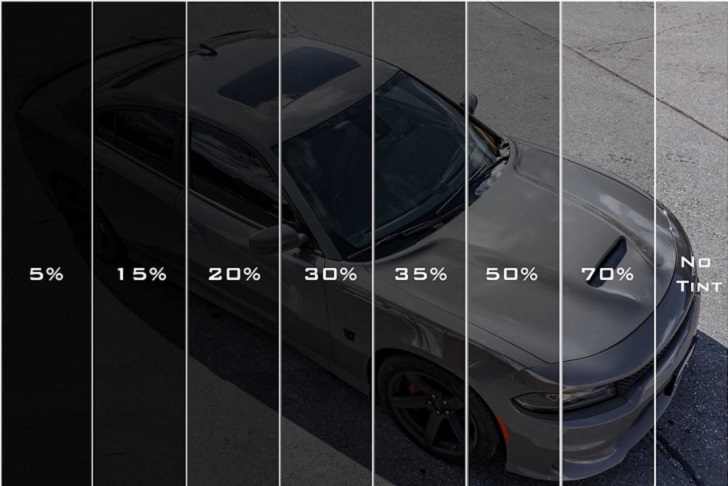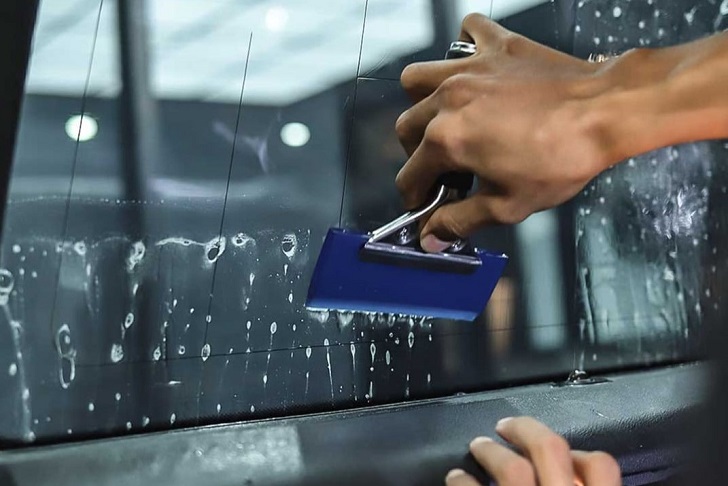In California, where the sun perpetually bathes the landscape in golden hues, drivers often seek solace from the relentless glare through window tinting. While adding a tint to your vehicle can provide a sleek look and numerous functional benefits such as privacy and reduced sun exposure, it’s crucial to be informed about the specific requirements set forth by California tint law to ensure your vehicle remains on the right side of the law.
Understanding the Basics of California Tint Law
California tint law is designed to balance the aesthetic and functional benefits of window tinting with safety considerations. It specifies how dark the tint can be on each vehicle window, ensuring that visibility is not compromised for both the driver and other road users. The front windshield, for instance, can only be tinted along the top four inches. This strip helps block out direct sunlight that can impair the driver’s vision without significantly darkening the view.

For the front side windows, the law allows a tint that permits at least 70% light transmission, effectively capping the darkness of the tint at 30%. This regulation helps maintain driver visibility during driving, particularly at night or in poor weather conditions. On the other hand, the rear side windows and the back windshield can sport any tint level, offering more flexibility for those seeking increased privacy or enhanced protection from UV rays.
Legal Implications of Non-Compliance with Tint Laws
The adherence to California tint law is not merely a suggestion—it’s a requirement enforced by local authorities. Police officers equipped with tint meters routinely check cars to ensure compliance. If your windows are found to be too dark, you may receive a tint ticket, typically costing $25 for a first offense. This ticket demands a fee and compels you to adjust your tint to meet the legal standards within a given timeframe. Ignoring this directive can lead to more severe consequences, including heftier fines of around $200 for subsequent offenses.

It’s essential for vehicle owners, mainly those purchasing used cars with pre-applied tint, to verify the compliance of the tint with state regulations. Sellers should provide documentation confirming the legality of the tint. Failure to ensure this can lead to legal headaches if the tint is found non-compliant during routine checks or after a traffic incident.
How to Ensure Your Tint Complies with California Tint Law
To avoid the pitfalls of non-compliance, always consult with a professional tinting service that is well-versed in the nuances of California tint law. Reliable service providers will be upfront about the legal limits and can offer certification that the tint applied is within state guidelines. If you’re already facing a tint ticket, prioritize adjusting your tint as recommended. This helps you adhere to the law and ensures your safety and that of others on the road.

California law sets clear limits for those curious about how dark their vehicle’s windows can legally be: no more than 30% tint on the front side windows and any level of tint on the rear side and rear windshield. Understanding these specifics can guide you in making informed choices that meld compliance with personal preference, ensuring that your vehicle’s aesthetics do not lead to legal issues or compromise safety.
Navigating the requirements of California tint law doesn’t just enhance your driving experience by optimizing visibility and comfort; it also keeps you aligned with state safety standards, protecting you and other drivers alike. Whether you’re looking to upgrade your ride or ensure your current window tinting is up to code, a clear understanding of these regulations is essential.




